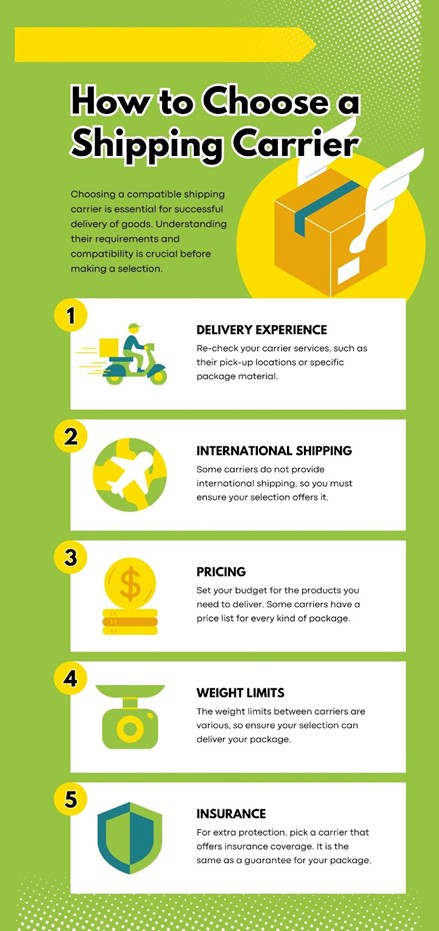
Asset-Light Logistics Models And The Shift Toward Rental Storage
Supply chain strategies are evolving to prioritise agility and efficiency. One prominent trend is the move toward asset-light logistics models, where companies minimise ownership of warehouses, vehicles, and other heavy infrastructure. Instead, firms are increasingly renting storage space and leveraging third-party logistics providers to scale operations up or down without the burden of large capital investments. This shift is driven by the need to respond quickly to changing customer requirements while controlling costs.
By adopting an asset-light approach, businesses can redirect resources to core competencies and innovation rather than tying up capital in bricks-and-mortar assets. The rise of on-demand warehousing and rental storage services exemplifies this transformation, offering flexible capacity that can be tapped as needed.
Rental Storage Providers Driving Asset-Light Logistics
Rental storage providers play a critical role in enabling asset-light logistics by offering scalable, on-demand storage solutions that eliminate the need for long-term infrastructure investments. The following three companies exemplify how this model works in practice across different regions:
Boxman (New Zealand):
Founded in 1990, Boxman is a shipping container specialist offering containers for hire or purchase across New Zealand. It runs self-storage yards and an advanced automated container storage system to provide flexible, 24/7 access to stored goods. Boxman lets businesses scale storage on demand – it can deliver containers to customer sites or hold them at its depots with used storage containers from Boxman – eliminating the need for permanent warehouses. Clients can expand or reduce storage space as needed, turning a fixed capital expense into a variable service cost.
Flexe (United States):
Flexe is a pioneer of on-demand warehousing, connecting companies with a network of 1,500+ warehouse locations across North America. Businesses use Flexe’s platform to secure short-term or flexible storage and fulfilment services – for example, to handle seasonal inventory peaks without long leases, and even major retailers have used Flexe for overflow capacity.
By aggregating excess space in third-party facilities, Flexe enables companies to pay for warehousing “as-a-service” only when and where they need it, avoiding the cost of owning extra facilities full-time.
Spacefill (Europe):
SpaceFill serves as Europe’s “warehousing cloud,” offering a digital platform to find and rent temporary storage across a network of 2,000+ warehouses in multiple countries. They make storing goods “as simple and flexible as storing in the cloud,” allowing users to quickly locate available warehouse space on a pay-per-use basis. This helps companies stay asset-light by providing on-demand storage for overflow stock or short-term needs. SpaceFill’s marketplace illustrates how regional providers are embracing the asset-light model to support scalable, flexible logistics for their clients.
The Rise Of Asset-Light Logistics Models
Asset-light logistics has gained momentum as companies seek more resilient and cost-effective supply chains. In essence, an asset-light model means keeping fixed assets to a minimum and relying on partners or services for logistics needs. Recent disruptions like market volatility and the e-commerce boom have prompted a re-evaluation of owning logistics assets. A 2021 EY survey found 31% of global executives cited digital technology shifts as a reason to pursue asset-light strategies, along with customer demand (25%) and capital constraints (21%)
Similarly, a 2023 Ware2Go study noted that while 89% of SMBs still handle some fulfilment in-house, nearly half want to refocus on core business, and 71% support shared warehousing as a future solution.
These signals reflect a broad desire to “do more with less” by transferring asset ownership to specialised partners. Logistics has become a prime target for asset-light transformation because outsourcing to capable 3PLs or networks can often deliver the same service more efficiently and flexibly than owning assets outright.
Cost Efficiency And Capital Flexibility
Adopting an asset-light logistics model yields significant financial benefits. By outsourcing warehousing or transportation, companies convert hefty capital expenditures into manageable operating expenses, avoiding the need to invest millions in facilities or equipment upfront.
Key advantages include:
- Lower Capital Expenditure: Without buying warehouses or trucks, a company frees up capital for other strategic needs. It also avoids sinking money into assets that may sit underutilised during slow periods.
- Flexible Cost Structure: Costs become more variable – firms pay for storage or transport capacity only when needed. This pay-as-you-go model provides scalability without burdening the business with fixed overhead during lulls.
- Reduced Maintenance Burden: Shifting assets to a third party also shifts responsibility for upkeep. Businesses no longer bear expenses for warehouse maintenance, equipment repairs, or asset depreciation – those are handled by the logistics partner.
- Risk Mitigation & Agility: Without long-term asset commitments, companies can enter or exit markets with less financial risk. If a product line underperforms or demand shifts, an asset-light firm isn’t stuck with empty warehouses. Conversely, if growth accelerates, it can rent extra capacity much faster than building new facilities. Many see going asset-light as “a critical means of de-risking operations” that gives businesses more freedom to adapt
Overall, these advantages improve capital flexibility. Funds that would have been tied up in bricks-and-mortar infrastructure can be redirected into innovation, marketing, or other core activities. This agility is a key reason many fast-growing companies choose asset-light models to support expansion without overextending their balance sheets.

Technology’s Role In Enabling Asset-Light Strategies
Modern technology is a key enabler of asset-light logistics. Companies that shed physical assets compensate by investing in digital platforms, data, and connectivity. A true asset-light provider might own few trucks or warehouses but leverage a robust technology network instead.
This means having systems for inventory tracking, real-time communication, and data analytics across multiple third-party providers. Advanced cloud software and API integrations let shippers and 3PLs exchange information instantly, maintaining visibility and control over outsourced operations. Digitisation has indeed been a major catalyst behind the shift to asset-light models..
Powerful tech tools now make it feasible to coordinate complex logistics networks without owning them, ensuring that outsourced warehouses and fleets perform like an integrated part of the supply chain.
Environmental And Operational Advantages
Beyond cost, asset-light models offer both environmental and operational benefits. By sharing resources and using existing capacity, companies can improve sustainability – for example, consolidating inventory in a shared warehouse means fewer buildings consuming energy and less duplication of half-empty trucks on the road. At the same time, outsourcing to specialists often raises efficiency. Third-party logistics providers leverage their expertise and technology to achieve faster, more reliable deliveries, which can translate into better service for end customers.
Around 71% of shippers using a 3PL report improved customer service and helped lower logistics costs. An asset-light setup can also enhance resilience and scalability: if one facility faces an issue, alternate sites in the partner network can compensate, and capacity can be increased on short notice during demand surges.
These factors show that asset-light approaches can align sustainability goals with high performance in the supply chain.
Implications For Logistics Managers And Professionals
As asset-light logistics models become more prevalent, supply chain managers must adapt. Key considerations include:
- Outsource Strategically & Choose Partners Wisely: Identify logistics functions that can be outsourced (e.g. warehousing, fulfilment, transportation) without harming core competencies. Then select reliable partners. Perform due diligence on 3PLs’ capabilities and seek flexible contract terms (for example, on-demand or short-term agreements) to retain agility. Ensure providers can integrate with your systems and offer visibility into their operations.
- Technology Integration & Visibility: Maintain robust oversight of outsourced operations via technology. Integrate your systems with partners’ systems (through APIs or cloud platforms) to get real-time data on inventory, orders, and shipments. A unified dashboard covering all logistics partners helps monitor performance and respond quickly to any issues.
- Risk Management & Contingency Plans: Asset-light models introduce dependence on third parties, so have safeguards. Diversify across multiple providers rather than relying on one. Define clear performance metrics (KPIs) in contracts and prepare backup options (alternate carriers, warehouses) in case a partner fails, ensuring no single point of failure will disrupt your supply chain.
- Evolving Skill Sets: Logistics teams should pivot from managing assets to managing relationships. Cultivate skills in vendor management, contract negotiation, and collaborative planning. Establish regular communication with providers to align forecasts and expectations. In an asset-light setup, effectively coordinating and monitoring partners is critical.
Conclusion
Asset-light logistics is not just a buzzword but a practical strategy reshaping supply chains worldwide. By renting storage space and outsourcing logistics functions, companies can adapt faster to change, avoid heavy capital burdens, and even advance sustainability goals.
For supply chain professionals, the shift toward asset-light approaches brings opportunities and challenges. Success depends on choosing the right partners, leveraging technology, and maintaining a balance between flexibility and control. When implemented thoughtfully, an asset-light logistics model can create a more responsive, resilient, and competitive supply chain. In a world of constant uncertainty, having a lighter asset footprint – combined with strong partnerships – may be the key to supply chain excellence in the years ahead.

With such importance placed on successful logistics operations within the supply chain, at The Institute of Supply Chain Management (IoSCM) we offer a range of professional qualifications in logistics and transport, each carefully designed to match modern businesses’ needs and upskill professionals at all stages of their logistics careers.
The IoSCM Logistics and Transport training programmes are available as part of our wide selection of Supply Chain Management courses, covering every aspect of the industry or as a focused Logistics and Transport Qualification. Start earning an internationally recognised qualification today.
